7 best dehumidifiers for Australian homes
These items are hand-picked to make your shopping experience easier. ENTR Media and ACM may be provided with compensation from affiliate partners if you click through.
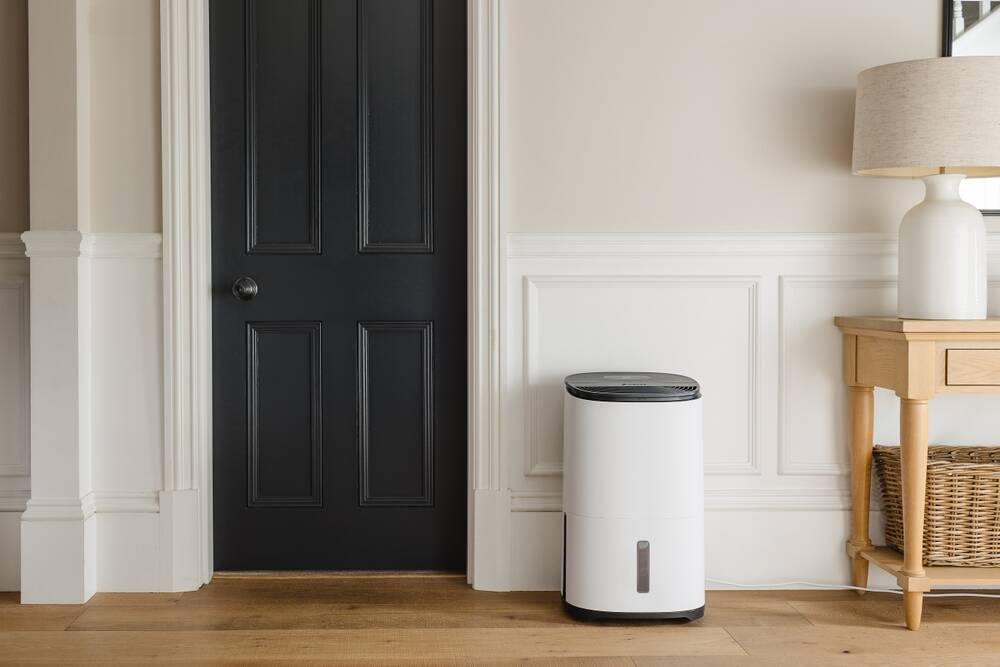
Equipped with the knowledge of how to select the right dehumidifier and what features to look for, you can confidently navigate the options available in the Australian market.
The following recommendations are the result of thorough testing and analysis, designed to cater to a variety of needs and preferences.
Here's our shortlist of the five best dehumidifiers for Australian houses:
- Ausclimate 10L Dehumidifier - Best overall air dehumidifier
- ASAKUKI 3L Humidifier - Best compact dehumidifier with night lamp
- SmartDevil Humidifier - Top-selling USB-powered dehumidifier
- Ausclimate 50L Dehumidifier - Best for big family households
- Vicks Mini Cool Mist - Best for babies and kids' rooms
Our top dehumidifiers in Australia
Whether you're dealing with high humidity levels or simply want to improve the air quality in your home, our recommendations are designed to cater to various needs and preferences.
Best overall air dehumidifier
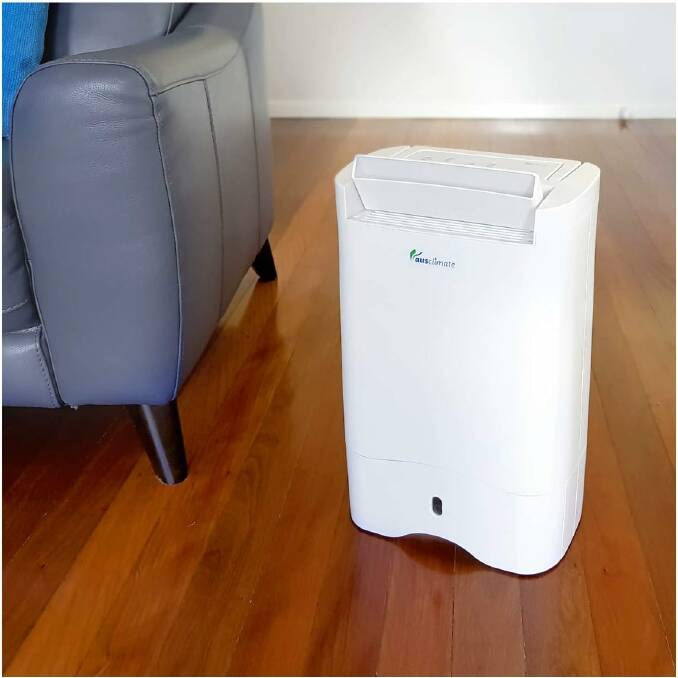
In homes that struggle with mould, excessive moisture, or a sticky feeling, a good dehumidifier becomes a necessary tool. The 10L desiccant dehumidifier from Ausclimate perfectly fills this function thanks to its versatility and ability to function well in a range of weather situations.
Deep-down drying is ensured by its desiccant rotor technology, which keeps areas cosy all year round.
The washing mode is a noteworthy feature that provides a cost-effective way to dry garments indoors. This can be a great help on rainy days or for households without outdoor hanging space, and it's less expensive than expensive standard dryers.
Another benefit of the Nano Silver Filter is the enhanced air quality it provides, guaranteeing that the air stays healthy and pure even after moisture is eliminated.
Worried about allergens or dust mites? Check out these top air purifiers in Australia to buy.
But keep in mind that while it's working, this dehumidifier warms the space, which is beneficial in the winter but could be uncomfortable in the summer. Additionally, it is more expensive than most dehumidifiers, which may be out of reach for some people.
But we think the expenditure is worthwhile if you're looking for a strong, multi-award-winning moisture-removing ally for a wider space.
In conclusion, we think the Ausclimate 10L Desiccant Dehumidifier is a good performer that relieves the pain of damp air and has extra features that help create a more comfortable and healthy interior environment. You can buy the Ausclimate Cool Seasons on Amazon for $480.60 or $499 from Ausclimate.
Pros
- Effective in both warm and chilly environments.
- Includes a laundry mode specifically designed to dry garments.
- The Nano Silver Filter improves the quality of the air by getting rid of viruses and bacteria.
Cons
- Produces heat when in use, which could be problematic in the summer.
- A little more costly than some other models available.
- For smaller or less humid environments, this can be overkill.
Best compact dehumidifier with night lamp
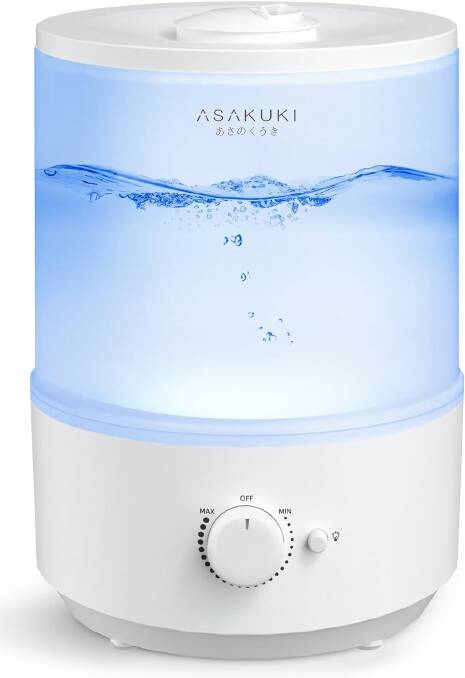
By providing a steady mist to combat dry air, the ASAKUKI model humidifier contributes to the maintenance of a comfortable interior atmosphere.
It enhances the quality and comfort of sleep all night long with a long running time at the lowest mist setting.
The option to add essential oils provides a therapeutic scent experience that could make your room feel cosier. The detachable fragrance box simplifies cleaning, which is extremely convenient.
The humidifier's silent operation is another important feature. It's meant to offer moisture without waking people up, thus even a child's nursery can use it because its noise level is only 23 dB.
The mild illumination produced by the night light feature can soothe young children or just serve as a comforting guide in the dark.
All things considered, the ASAKUKI humidifier is a respectable option for people looking for increased air moisture content and the calming benefits of aromatherapy. It is an appealing choice for many consumers because of its safety features, quiet operation, and simplicity of use.
At $64.99 on Amazon, this is a great value-for-money option.
Pros
- Incorporates aromatherapy with a detachable, easily cleaned fragrance box.
- Silent operation makes it perfect for restful slumber.
- Has an automatic shut-off feature for increased security.
Cons
- A few people complained of leaks in the water.
- Location options may be limited by a short power cord.
- Some users have observed a slight increase in maximum humidity.
Top-selling USB-powered dehumidifier
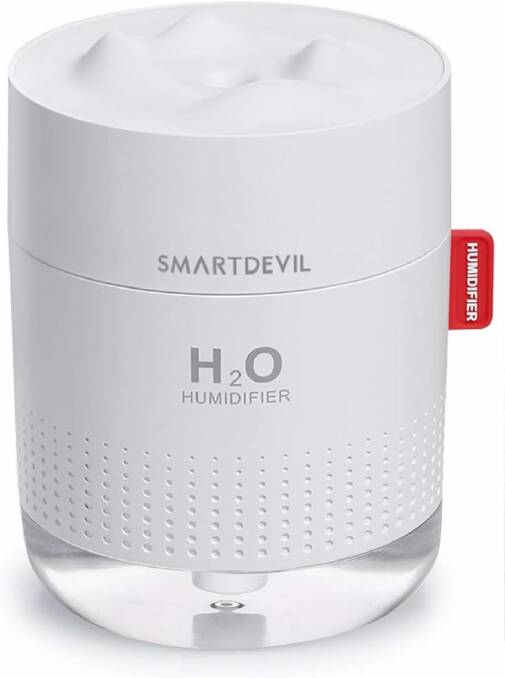
Next on our list is a top-selling dehumidifier on Amazon with over 10,300+ reviews.
This SmartDevil model delivers whisper-quiet functioning for Australians who want to maintain a comfortable humidity level without disturbing the calm.
The device's night light feature, which offers a soft glow to the room and can be adjusted to suit personal choice, together with its quiet operation (less than 30dB) makes it ideal for bedrooms and guarantee a good night's sleep.
Another noteworthy feature of the product is its convenience, as it has two spray modes to accommodate the varying humidity requirements of various spaces and scenarios. When combined with the humidifier's automatic shut-off feature that activates when the water level is low, owners may safely leave it running without worrying about anything other than their home's safety.
It's crucial to remember that the device depends on USB power, which may limit its mobility and location. Users have also mentioned that there has been water buildup on top of the humidifier, which is a problem that may need to be fixed occasionally.
A possible drawback is the requirement for filter replacements, which may result in extra maintenance expenses based on usage.
After a thorough evaluation, we found that the SmartDevil Humidifier is a good option for the purpose for which it was designed, despite a few minor issues that are typical of many similar tiny appliances.
Selecting this humidifier comes down to weighing the convenience of practical safety measures and silent operation against the adaptability of power sources and upkeep requirements.
This desktop dehumidifier only costs $29.99 on Amazon.
Pros
- Silent functioning to provide uninterrupted slumber.
- Protects against water shortage for added security.
- For versatility, it provides two spray modes.
Cons
- Restricted to USB power.
- May encounter problems with water pooling.
- It could be necessary to replace filters frequently.
Best for big family households
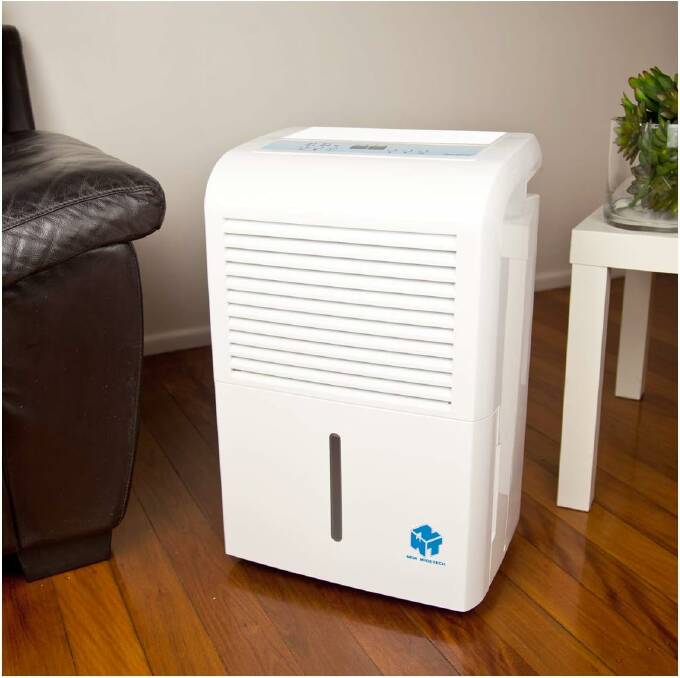
The large moisture-sucking capacity of Ausclimate's All Seasons Dehumidifier makes it stand out and is ideal for dealing with dampness in large spaces.
Warm weather doesn't affect its performance because of its special hot gas defrost system.
It is incredibly manoeuvrable and has complete electrical controls, so you can set it and forget it while it does its magic to adjust the humidity in your house.
Despite its great efficiency, this type works better in larger spaces due to its size.
This device isn't meant to be tucked away in a nice corner. Even though it works hard to drive away moisture, it is still quite audible, so keep that in mind if you're looking for quiet. Not a deal breaker, but something to consider for those of us who want to live in harmony.
A few users have brought out discrepancies with the integrated hygrometer. This doesn't take away from the device's main purpose, which is to significantly lower moisture levels, though.
We consider the high decibel performance of this dehumidifier to be a minor price to pay for a mould-free and delightfully dry living area.
You can get the Ausclimate 50L Dehumidifier for $699 at Harvey Norman but it is cheaper on Amazon at $579.
Pros
- Powerful moisture removal, perfect for big areas.
- Warm gas defrost system that is suitable for winter.
- Simple electronic controllers with practical features such as auto-restart.
Cons
- More space may not be appropriate for smaller spaces.
- Quite noisy in terms of residential settings.
- Some customers have observed limited accuracy of the built-in hygrometer.
Best dehumidifier for babies and kids' rooms
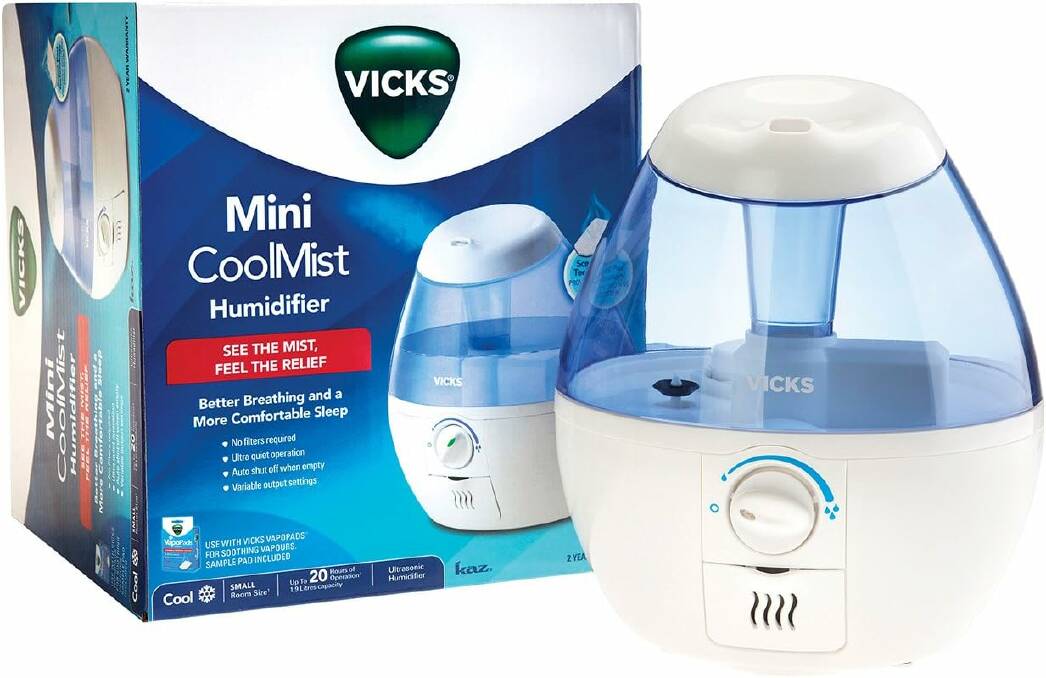
It's like having your own little haven when you walk into your room with the Vicks Mini Cool Mist Humidifier. It's intended to improve your breathing and make sure you have a more pleasant night's sleep.
You can rest easy knowing that the model operates quietly, which is especially useful in a bedroom or nursery.
The humidifier is remarkably efficient for its size and fulfils its 20-hour operation guarantee. Its small size makes it require more frequent refills, but other than that, it provides a simple, low-maintenance experience. The lack of filters is a blessing for anyone trying to cut costs and hassles.
Though optional, take into consideration the further option of utilising Vicks smell pads to further alter the ambient mood.
If you choose them, you will notice that it adds a light scent to the humidifying effect. It's a small detail that makes a big difference in how comfortable a space feels.
You can buy the Vicks Mini Cool Mist for $69.95 on Amazon.
Pros
- Silent operation is appropriate for nurseries and bedrooms.
- Filters are not required, saving upkeep headaches.
- For those who prefer an aromatic mist, optional scent pads are available.
Cons
- Low tank capacity can necessitate frequent refills.
- The requirement for regular changes of scent pads raises the overall cost.
- Not the best for bigger areas that require more moisture.
Reliable mid-range dehumidifier
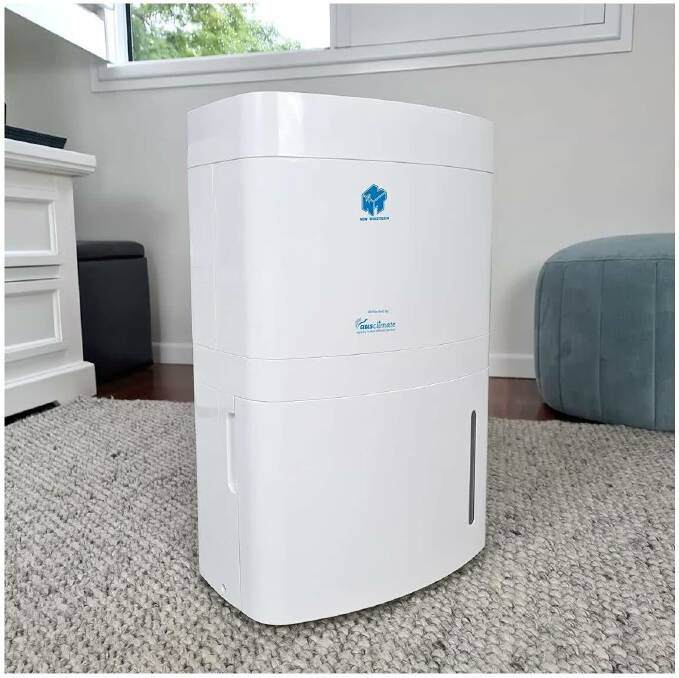
In our Australian environment, humidity can be a recurring issue that fosters mould growth and discomfort. In situations like these, the Ausclimate NWT Medium+ 25L Dehumidifier excels at extracting moisture, making it a useful tool when the rain is persistent or the air seems too thick inside.
The simplicity of usage of this item is a convenient feature. Its changeable humidity settings and soft-touch LED controls make it easy to operate, transforming a musty room into a comfortable area.
Its capacity to operate as a clothes dryer also provides a multipurpose option for homeowners trying to cut costs on purchasing additional appliances.
It's also comforting to know that our appliance's auto-restart feature ensures that it won't miss a beat in the case of a power outage. But we should be aware of the noise, which can be bothersome at times, particularly when we want to spend a quiet evening at home.
Even while we enjoy a cosy atmosphere, we might not be as fond of the minor temperature increase that occurs when the dehumidifier runs.
Keep in mind that the dehumidifier will use a lot of electricity when dealing with moisture, as seen by the electricity bill.
However, given the comfort and defence against moisture-related problems it offers, the additional cost may be justified as an investment in the well-being of our house.
Pros
- Suitable for large rooms, and stellar moisture extraction.
- Easy to use and equipped with logical electrical controls.
- Bonus: can be used as a cheap clothes dryer.
Cons
- Potential noise levels pose an inconvenience.
- When operating, a little rise in room temperature.
- Elevated power costs could be apparent.
Best portable dehumidifier
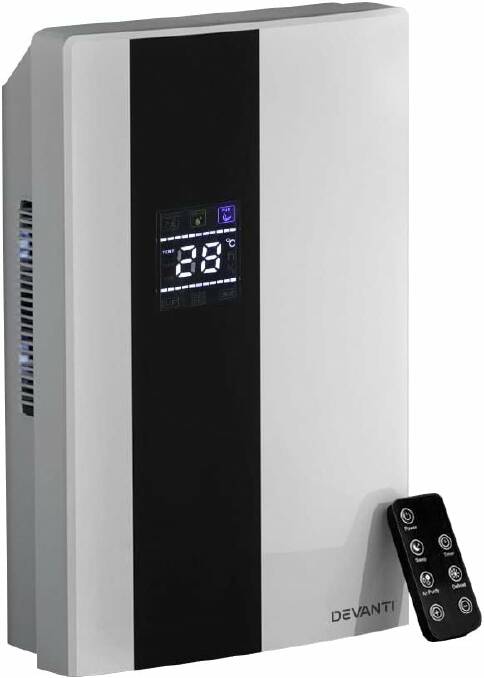
Dealing with mould and moisture can be quite difficult, but if you have Devanti's small 2L dehumidifier, you'll be ahead of the game. It serves to keep bacteria and allergens at bay in addition to lowering the amount of moisture in the air.
We value the consideration that went into creating a user-friendly gadget with a convenient control and a clear LCD display.
It's a blessing to have the choice between continuous draining and a removable tank. These practical qualities mean you won't have to bother about checking on it all the time.
Also, we may enjoy a quiet night's sleep or day without having to worry about an annoying dehumidifier.
The fact that some users have expressed issues with the humidity measurements, however, cannot be disregarded. Remember this if your needs for dehumidification require accuracy above all else.
Nevertheless, we think the Devanti Dehumidifier performs admirably in small to medium-sized rooms, making it a valuable ally in the fight against excessive moisture and airborne contaminants.
Need it for your bathroom? You can buy it on Amazon for $73.85 or Big W for $74.95. Unfortunately, it's quite expensive to buy directly on the Devanti website over $150.
Pros
- Its dual purpose of being an air filter and a dehumidifier
- A smart remote makes it simple for users to control
- Minimal disruption is ensured by quiet operation.
Cons
- A smaller 2L tank might need to be emptied more frequently.
- Not recommended for bigger areas that require dehumidification
- A few people doubt the humidity readings' accuracy.
The basics of how a dehumidifier works
A dehumidifier lowers the humidity in a space by drawing out excess moisture from the air. In order for it to work, moist air must first enter through a fan and then flow across cooled coils.
Water droplets form on the coils as the air cools and condenses, gathering in a tray or reservoir.
The compressor of the dehumidifier reheats the now-dry air before releasing it back into the space. This procedure aids in avoiding problems including the formation of mould, musty smells, and damage to possessions from excessive humidity.
A humidistat, which many dehumidifiers come with, lets customers programme preferred humidity levels for automated control.
Here's why you should get a dehumidifier
A dehumidifier is a useful addition to any interior space since it provides a number of advantages. The capacity to maintain ideal humidity levels in the home, which is essential for comfort and health, is one of the main benefits. The main reason is to help in maintaining optimal humidity levels.
A dehumidifier helps make a living area more pleasant by removing excess moisture from the air, particularly in humid climates or during the summer when humidity levels tend to rise. This can reduce pain and stickiness, giving residents a more comfortable atmosphere.
Moreover, a dehumidifier is a big help in keeping mould and mildew from growing. Elevated relative humidity can foster the growth of mould and mildew spores, resulting in offensive odours, respiratory problems, and possible property damage.
A dehumidifier successfully prevents the growth of mould and mildew by regulating humidity, protecting the integrity of walls, furniture, and other surfaces as well as the purity of the air inside buildings. But they also serve as good options to dry clothes indoors.
A dehumidifier has health advantages, but it can also save money and use less energy. Excessive humidity can give the impression that interior areas are warmer than they actually are, which increases the need for air conditioning units to keep people comfortable.
A dehumidifier can help people feel more comfortable in hotter temperatures by lowering humidity, which may lessen the need for air conditioning and save electricity.
Additionally, energy-efficient models with programmable settings and auto shut-off help optimise energy usage, which eventually results in cheaper power bills.
The differences between desiccant and compressor dehumidifiers
The main areas where desiccant dehumidifiers and compressor dehumidifiers diverge are in their modes of operation and settings under which they are appropriate.
Desiccant dehumidifiers pull moisture out of humid air using a desiccant substance, usually silica gel. They can be used in colder climes or places where the temperature regularly drops below 18°C because they work better in colder settings and with lower humidity levels.
On the other hand, compared to a compressor dehumidifier, desiccant dehumidifiers may use more energy and often have lesser moisture removal capacity.
Compressor dehumidifiers, on the other hand, work similarly to air conditioners in a refrigeration cycle. They cause the air to chill, causing moisture to condense.
This moisture is then gathered and removed. Compressor dehumidifiers work better in higher humidity levels and warmer climates because of their increased ability to remove moisture from the air.
They are frequently utilised in locations including basements, restrooms, and laundry rooms as well as in commercial, industrial, and residential environments with continuously high humidity levels.
Features to look for in a good dehumidifier
Different dehumidifier brands have different features such as the ability to dry clothes indoors, clean up dust mites, dust and pet dander, and as a sort of air conditioner or air purifier.
- Capacity - Take into account the room's or area's square footage for the dehumidification process. A daily capacity of about thirty to fifty pints may be adequate for smaller rooms, such as closets or toilets. Larger spaces, like basements or entire homes, might require a capacity of at least 70-90 pints each day, whereas medium-sized rooms might only need 50-70 pints.
- Humidistat - With a digital humidistat, you may precisely adjust and maintain the humidity level you want. Seek for models that have an easily seen digital display and customisable settings so you may change the humidity to your preferred level.
- Portability - Take into account the dehumidifier's weight and dimensions, particularly if you intend to transfer it between rooms regularly. For simple mobility, look for features like caster wheels and integrated handles.
- Options for drainage - While some dehumidifiers provide continuous drainage, some require manual emptying of the water tank. Water can be automatically pumped out through a hose by models that have an integrated pump, making them perfect for continuous operation without the need for operator intervention.
- Energy efficiency - Dehumidifiers with an Energy Star rating are made to use less energy, which over time can result in considerable electricity bill savings. To ensure efficiency, look for models that have earned the Energy Star certification and compare the energy consumption rates.
- Noise level - Take into account the dehumidifier's decibel (dB) value, particularly if you intend to use it in calm spaces like living rooms or bedrooms. Seek for versions that operate more quietly, usually between 40 and 60 decibels.
- Defrost function - The dehumidifier's efficiency may be impacted by frost accumulation on the coils in colder locations or low-temperature settings. To ensure effective functioning, look for models with an automated defrost feature that recognises the accumulation of frost and starts the defrosting process.
- Auto restart - In the event of a power interruption, this feature makes sure the dehumidifier starts up again using your pre-programmed settings. To save yourself the trouble of having to manually reset the device, look for models that have auto restart capability.
- Air filtration - To collect dust, allergies, and other airborne particles, some dehumidifiers use washable or changeable air filters. For better indoor air quality, look for models with HEPA filters or other cutting-edge filtering technologies.
- Warranty - Verify the manufacturer's warranty coverage, taking note of the length and scope of labour and parts coverage. For extra piece of mind, look for warranties that are at least a year long and think about getting an extended warranty.
Frequently asked questions
What are the top recommended dehumidifiers for handling mould issues?
We have found that machines such as the DeLonghi DDS25 and the Ionmax ION612 are quite good at fighting mould. Their reliable operation in conditions with high humidity is well known.
How do desiccant dehumidifiers compare to compressor dehumidifiers in Australian climates?
Because they don't use refrigerant, desiccant dehumidifiers-like the EcoSeb DD122EA-CLASSIC-perform well in Australia's colder regions and at lower temperatures. However, at higher temperatures, compressor units-like the Olimpia Splendid DOLCECLIMA-are usually more energy-efficient.
Can you suggest some effective small-sized dehumidifiers for apartments?
Perfect for apartment living, the Pro Breeze Electric Mini Dehumidifier is small in size but powerful in performance. In a similar vein, the Ausclimate NWT Small 12L unit's performance in condensed settings is well acclaimed.
Which dehumidifiers have the highest efficiency ratings for Australian homes?
Mitsubishi MJ-E16VX dehumidifiers are renowned for their outstanding energy efficiency and feature-rich designs that balance environmental considerations with economical operation.
Are there any significant differences in running costs for different types of dehumidifiers?
In general, compressor dehumidifiers are more economical in humid environments, but desiccant types work better in colder climates. Nevertheless, the model, its configuration, and the frequency of use will determine the real running costs.


